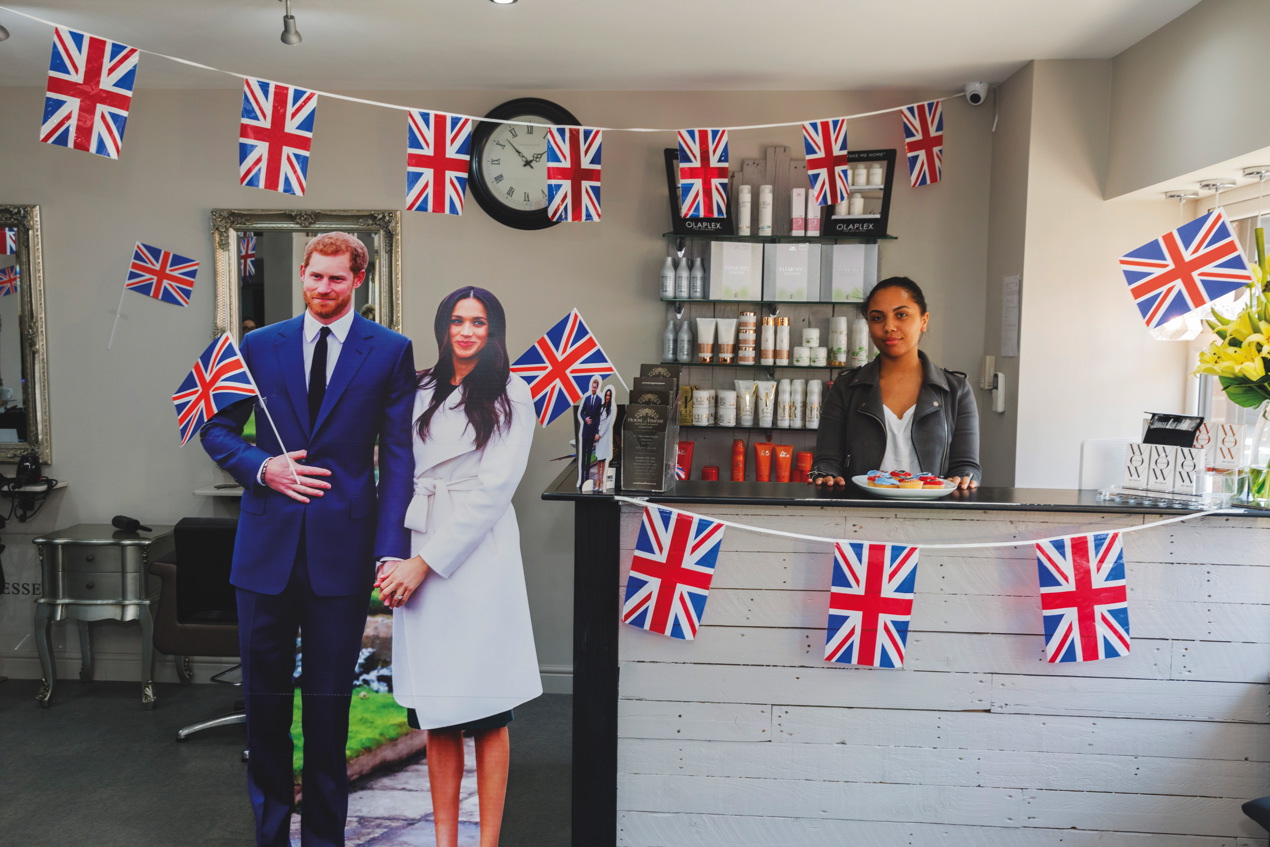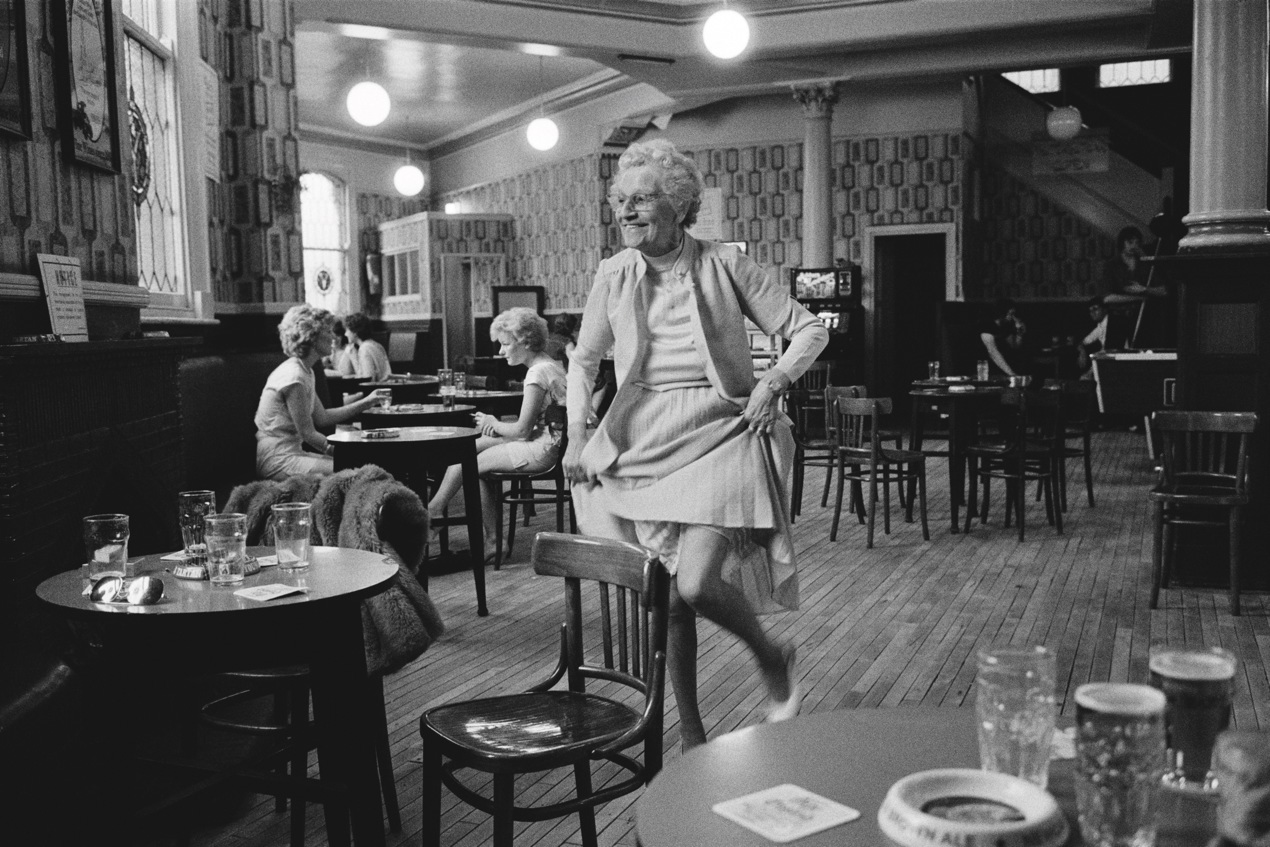Snap chat
Martin Parr is one of Britain’s leading photographers. But does the deluge of snapshots in his major exhibition in Manchester document the changing city – or is it part of an attempt to repackage it
Inviting Martin Parr to portray your city is always going to be a bit of a risk because he is a controversial photographer. But he knows Manchester well from his days there as a photography student and from regular commissions ever since, so Manchester Art Gallery doubtless thought that risk was worth taking. The results would be interesting for Mancunians – and might well have something to say about Manchester to the wider world.
Modern Manchester, on the evidence of this exhibition, functions without any public services
Perhaps to forestall any doubts on that question there are copies of appreciative press reviews at the door of the exhibition, almost as if the gallery were trying to get its defence in first. And it’s true – there is plenty of interest here, although perhaps not always in the way that the gallery intended.
The exhibition is arranged chronologically, from Parr’s early black and white mounted and framed prints through to 1980s and 1990s colour film prints. All of these are in one room and then the next space has the 2018 digital prints from the very large (maybe 4ft by 5ft, judging by eye) to smaller than A4, all unframed, unmounted and pinned to the wall. There are about 450 in all – so a minute’s study of each would have you in there for nearly eight hours.
In concept then the exhibition is definitely a game of two halves. The work from the 20th century is social documentary. There is a series on Yates’s Wine Lodges, on the Osmonds fans, a very humane one on Prestwich Mental Hospital, one about a street about to be demolished, and one about the weather. All those are black and white and are all good examples of Parr’s ability to choose a subject and get under its skin.
Parr would go on to document in a similar way rural life around Hebden Bridge, where he lived in the mid-1970s. But in the 1980s, following a move to Wallasey in Wirral, he turned to colour and you can see his signature style emerging in a series he was commissioned to do about retail activities in Salford, Point Of Sale. Some see that style as wry, witty and observant, and others see it as mocking, class-based and voyeuristic. But so far, so interesting.
When we move into the rooms dedicated to Manchester in 2018 things change. The photographer roved endlessly over Greater Manchester last summer, apparently taking many thousands of photographs in just 20 days. That’s quite an output.
In the face of this deluge the curators seem – understandably – to have struggled. There are around 300 images chosen for display and some 240 of those are in a giant grid on two walls. It is difficult to get a good view of many of them because they are so high up or low down. It is almost as though the decision was taken simply to impress with the sheer quantity of imagery rather than its quality.

The result is photographic only in the technical sense: it is more a digital carpet-bombing of the city. That is doubtless interesting for Mancunians wanting to spot faces and places but, unlike the older images, does not really qualify as social documentary. A documentarian uses distillation to produce a rounded picture of their subject. This is more a stream of images in danger of bursting its banks.
And either you take to this photographer’s snapshot style or you don’t. It’s not really an art that hides an art and so perhaps it is better seen as anthropology with a camera, a kind of one-man digital Mass Observation for the 21st century.
What emerges is a city that may have changed on the surface yet remains much the same underneath. There are yoga sessions and sporting events, textile workshops and barbers’ shops, street parties and Irish festivals. These are leavened with more recent developments such as MediaCity and the university’s National Graphene Institute.
More striking, perhaps, is what does not appear. Modern Manchester, on the evidence of this exhibition, functions without any public services. I looked hard but failed to find any images of: the NHS, ambulance crews, police, fire and rescue, refuse collection or disposal, public transport, classrooms, libraries or museums. It is possible I missed one or two amongst so many but I don’t think so. Nor did I spot any Big Issue North sellers or any suggestion of homelessness.
Maybe they were left on the cutting-room floor; maybe they were never taken. Either way, it’s important. We all know the daily reality now – but in 50 years’ time these photos will be historical evidence.
Perhaps a more authentically modern exercise would have been to ask Mancunians to take their own photos and then to have displayed those. Would that not have reflected more accurately developments over the last 20 years or so? The results would surely have reproduced Parr’s off-the-cuff style well, after all, and virtually any photograph will have an impact if it is blown up to double or treble poster size and pinned to a gallery wall. Why not let the people speak on the walls of their own city’s gallery?
In the round, the exhibition seems to be part of the repackaging of Manchester. Out with the black and white Yates’s Wine Lodges and mullets and in with graphene and Salford Quays. In that sense, the photographs are part of the very process that they purport to portray. Ostensibly, they show a city confident enough to turn a famously candid photographer’s camera on itself and no holds barred. Yet the result is oddly fudged – not affectionate but not acid either – maybe because the sharp edge that Parr has displayed elsewhere would not have worked here. Less, perhaps, would have been more.
Martin Parr: Return To Manchester is at Manchester Art Gallery until 22 April (manchesterartgallery.org). Peter Barker is a Manchester-based photographer and writer (peterbarker.org)

Leave a reply
Your email address will not be published.